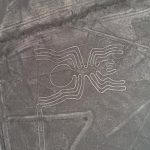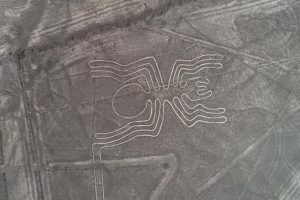June 20 () –
Paleontologists have Featured in PeerJ Magazine a new species of dinosaur from 78 million years ago with a very extravagant set of horns.
The dinosaur’s name, Lokiceratops rangiformis, roughly translates to “Loki’s horned face that looks like a caribou”, due to the unusual curved, blade-like horns on the back of its frill (the bone shield at the back of the skull) and the asymmetrical horns at the top of the frill, reminiscent of a caribou’s antlers.
“The dinosaur now has a permanent home in Denmark, so we opted for a Norse god and, in the end, Doesn’t he look a lot like Loki with the curved swords?” said University of Utah professor and study co-author Mark Loewen, referring to the trickster god’s weapon of choice.
Loewen, also a paleontologist at the Utah Museum of Natural History, and Joseph Sertich, a paleontologist at the Smithsonian Tropical Research Institute, are both scientific consultants to the Museum of Evolution in Denmark, the new home of Lokiceratops.
“It’s one of those stories with a happy ending, where he didn’t go to someone’s mansion,” Sertich said. “It ended up in a museum, where it will be preserved forever so people can study it and enjoy visiting it.”
Lokiceratops was discovered in 2019 in the badlands of northern Montana, two miles (3.2 kilometers) south of the US-Canada border. Sertich and Loewen helped reconstruct the dinosaur from fragments the size of dinner plates and smaller. Once they put the pieces of the skull together, They realized that the specimen was a new type of dinosaur.
Measuring an estimated length of 6.7 meters and weighing 5 tons, Lokiceratops is the largest of the group of horned dinosaurs called centrosauruses that have been found in North America. It has the largest frilled horns ever seen on a horned dinosaur and lacks the nasal horn that is characteristic among its relatives.
“This new dinosaur pushes the boundaries of bizarre ceratopsian headdresses, sporting the largest frilled horns ever seen on a ceratopsian,” Sertich said. “These cranial ornaments are one of the keys to discovering the diversity of horned dinosaurs and demonstrate that evolutionary selection for conspicuous displays contributed to the dizzying richness of Cretaceous ecosystems.”
Sertich compared the horns of dinosaurs to the feathers of birds. Birds use feather colors and patterns to differentiate their own species from other similar bird species.
“We think the horns on these dinosaurs were analogous to what birds do with displays,” Sertich said. “They use them for mate selection or species recognition.”
Lokiceratops was excavated from the same rock layer as four other dinosaur species, indicating that five different dinosaurs lived side by side 78 million years ago in the swamps and coastal plains along the eastern coast of Laramidia. , the western landmass of North America created when a seaway divided the continent. Three of these species were closely related, but were not found outside the region.
“It’s unheard of diversity to find five living together, similar to what you would see on the plains of East Africa today with different horned ungulates,” Sertich said.
Unlike the wide range of large wild mammals that roam the western United States today, such as elk, these ancient animals were geographically limited, he added. Loki’s discovery provides evidence that these species evolved rapidly within a small area, a process sometimes seen in birds.
By the time Triceratops appeared on the scene 12 million years later, regional differences had homogenized into just two species of horned dinosaurs from Canada to Mexico, possibly in response to a more homogeneous climate, Sertich said.
The study shows that dinosaur diversity has been underestimated and presents the most complete family tree of horned dinosaurs to date.
“Lokiceratops helps us understand that we are only scratching the surface when it comes to diversity and relationships within the horned dinosaur family tree,” Loewen said.














![[Img #74676]](https://thelatestnews.world/wp-content/uploads/2024/12/Laser-artificial-neuron-300x200.jpg)
Add Comment